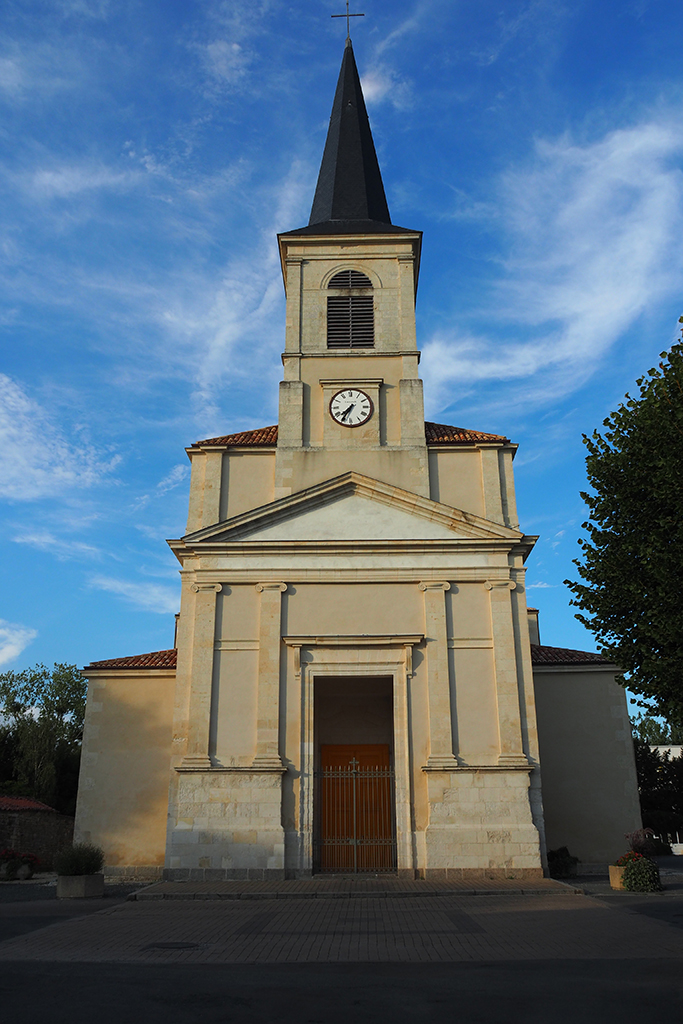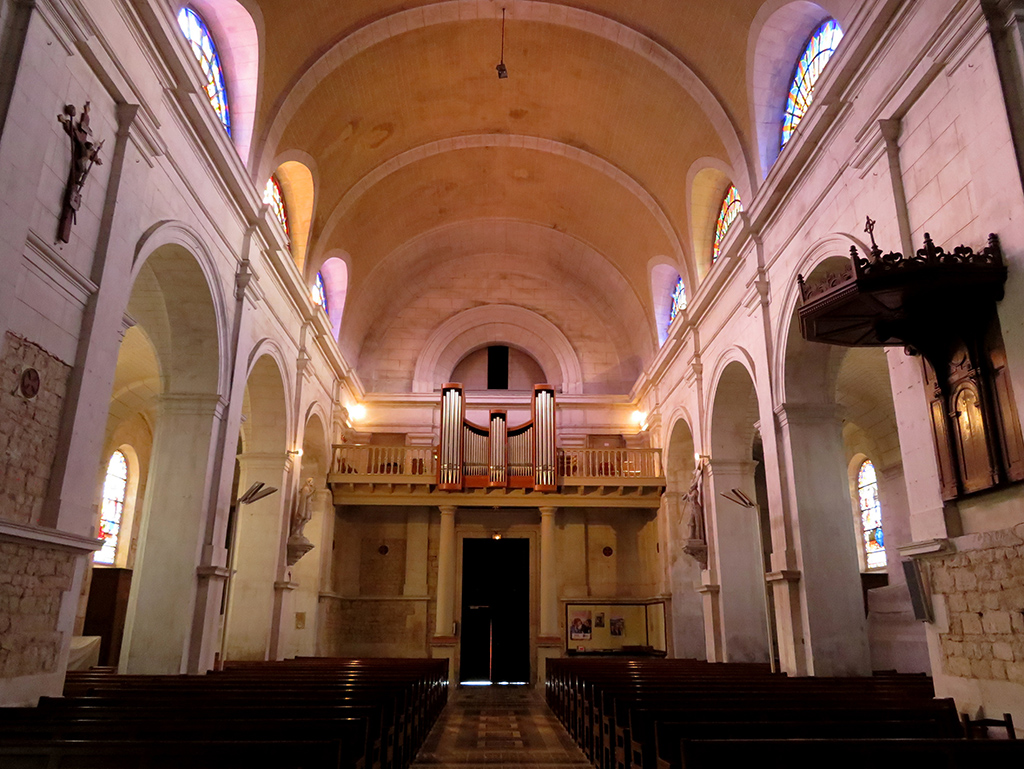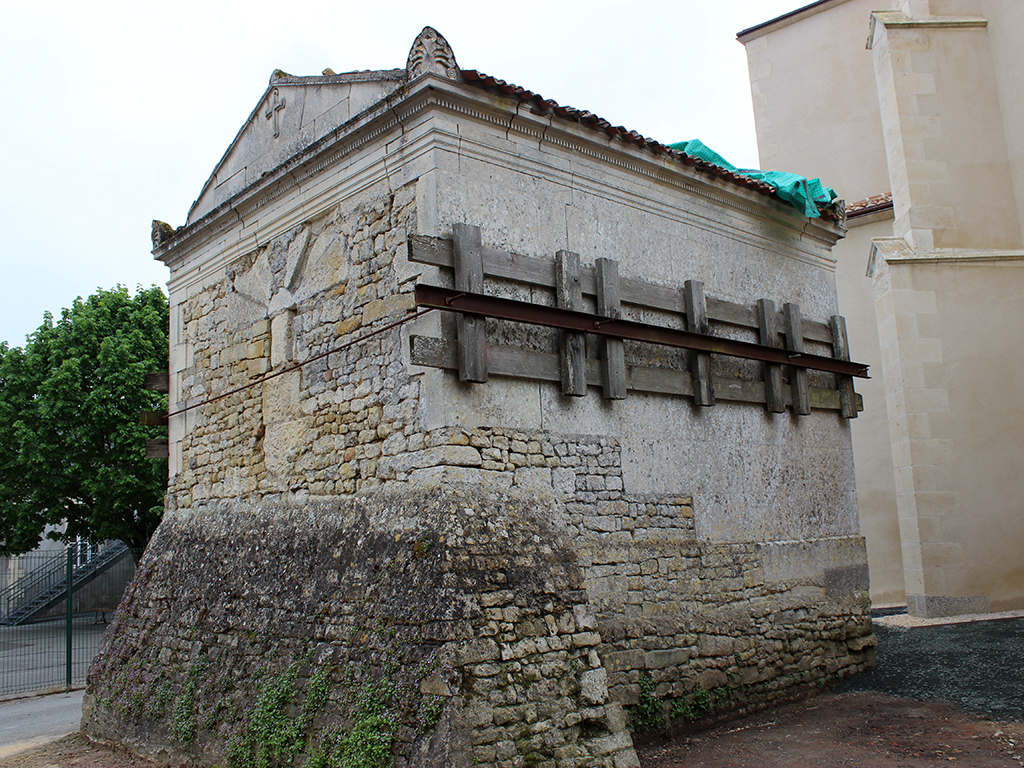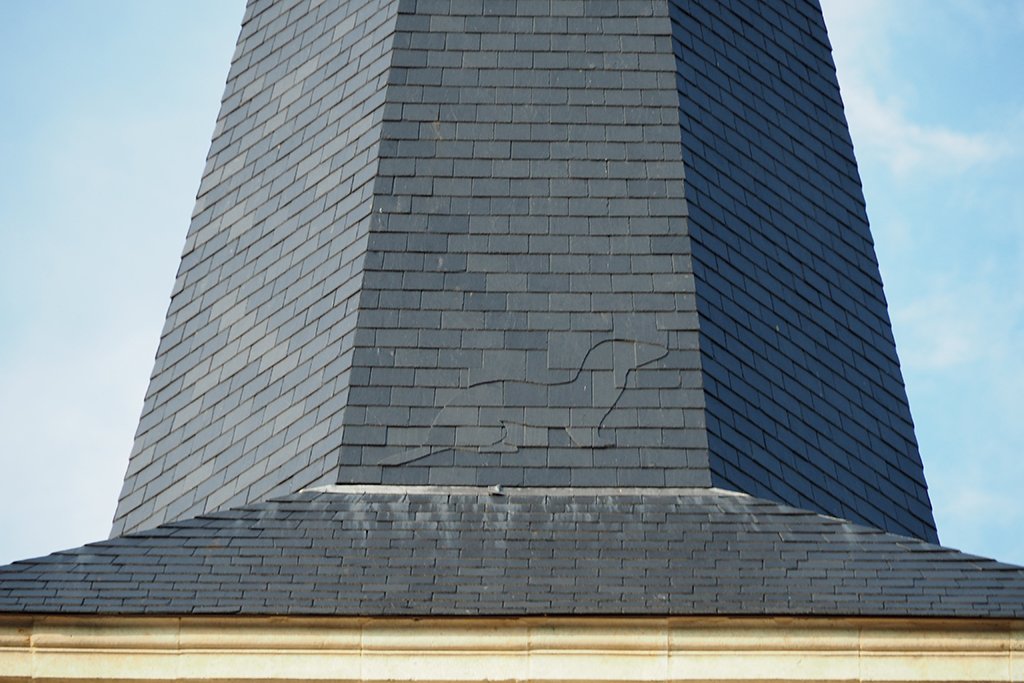Church Notre-Dame-de-l’Assomption
Registered and listed sites
Description
The church underwent a number of destructions, notably during the French Revolution, after which it was rebuilt to serve the two communes of Sainte-Hermine and Saint-Hermand (now united under the single name of Sainte-Hermine).
In 1832, the church was in danger of being completely demolished due to its advanced state of disrepair and the exorbitant cost of repairs. The decision was taken to carry out the work all the same, the cost of which far exceeded the initial estimates. The new church was to be built in the Greek style, with 3 naves and measuring 35.50m long by 19.50m wide. The bell tower was to be rebuilt on the same site as the previous one, i.e. above the current altar of Saint Joseph. At the request of the town council, the bell tower was transferred to the façade, and the building was oriented towards the street rather than parallel to it. Work did not begin until 1844, under the aegis of Mr Raffin, a contractor from Sigournais, and according to the plans of Mr Levêque, an architect from Fontenay-le-Comte. For reasons of economy, ashlar and iron were used sparingly. In 1875, thirty years after this total reconstruction, the church was again in danger of ruin and required the construction of buttresses to support the choir.
In 1877, three bells cast in Le Mans were installed.
The white marble high altar was consecrated in 1885. It features eight columns framing niches containing statues of Saint Hermes, Saint Catherine, Saint Paul, Notre Dame du Sceptre, Saint Peter, Saint Theodora Hermina and Saint Symphorien. Four monumental statues of the Evangelists stand in the choir. On either side of the choir, two medallions set against a blue background depict Saint Paul's inverted sword (on the Epistle side) and Saint Peter's keys and inverted cross (on the Gospel side).
The wrought-iron Holy Table was made by Mr Cailleton, a blacksmith from La Gaubretière, and dates from 1838.
The stained glass windows in the side chapels date from 1868 and were made in Tours by master stained glass artist L. Lobin. Those in the side aisles date from 1885 and were made in Toulouse by the master glassmaker M. Gesta. The transept windows were installed a year later.
In a chapel at the back of the side aisle, Mr Piberne had a Piéta erected in honour of the 61 children of Sainte-Hermine who died in the First World War.
The bell tower, which slopes steeply over the nave and whose spire is of irregular construction, was swept away during the storm of February 1972. It was never completely rebuilt until 2014, when it was restored to its original style as part of the church's restoration work. If you take a close look at the bell tower, you'll see the ermine, the symbol of the municipality, carved into the slate.
Next to the church, an ossuary built in 1848 houses the bones from the old cemetery. These features have been listed in the Inventaire supplémentaire des Monuments Historiques since 6 February 1989.
- Types : historic site and monument
Languages
- French
Location
Comfort / services
Prices / opening times
Free
Opening
Open all year round




